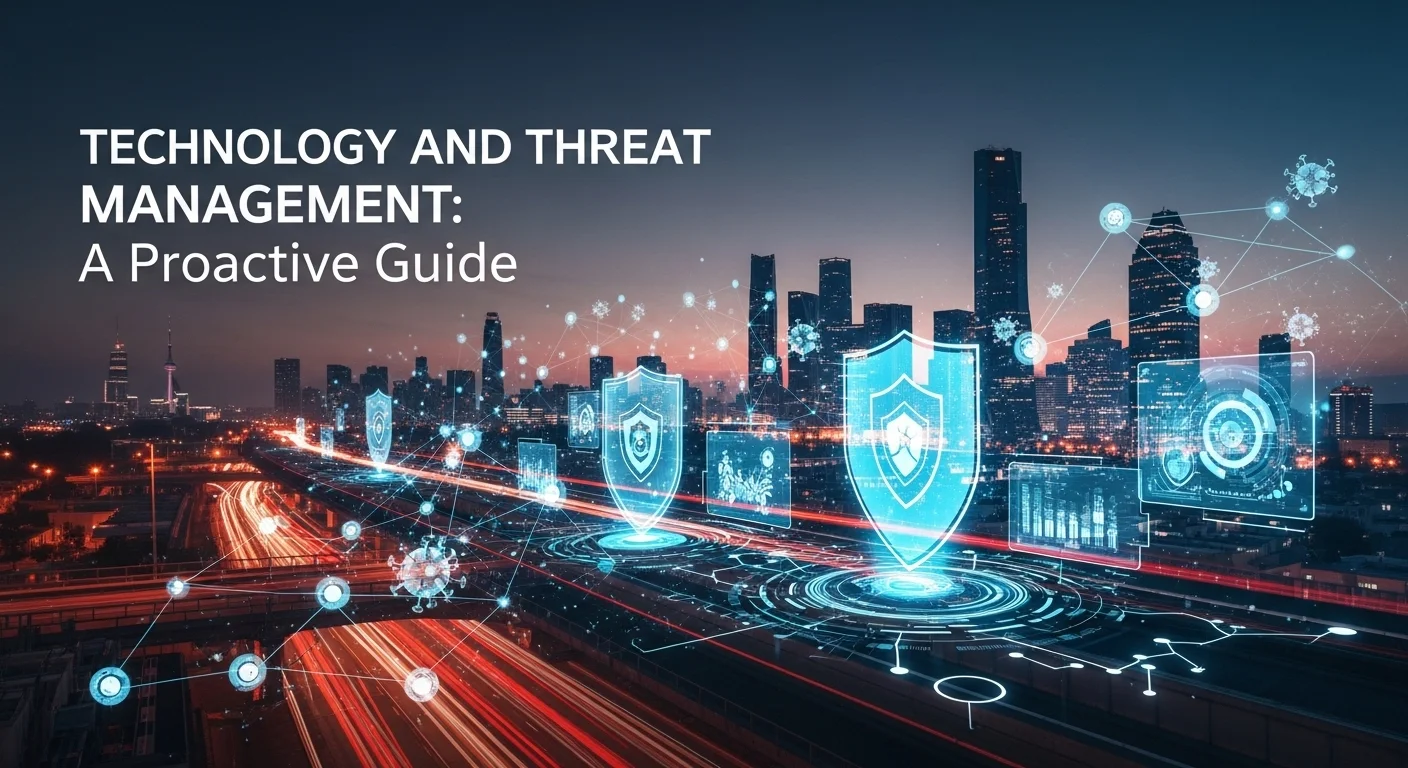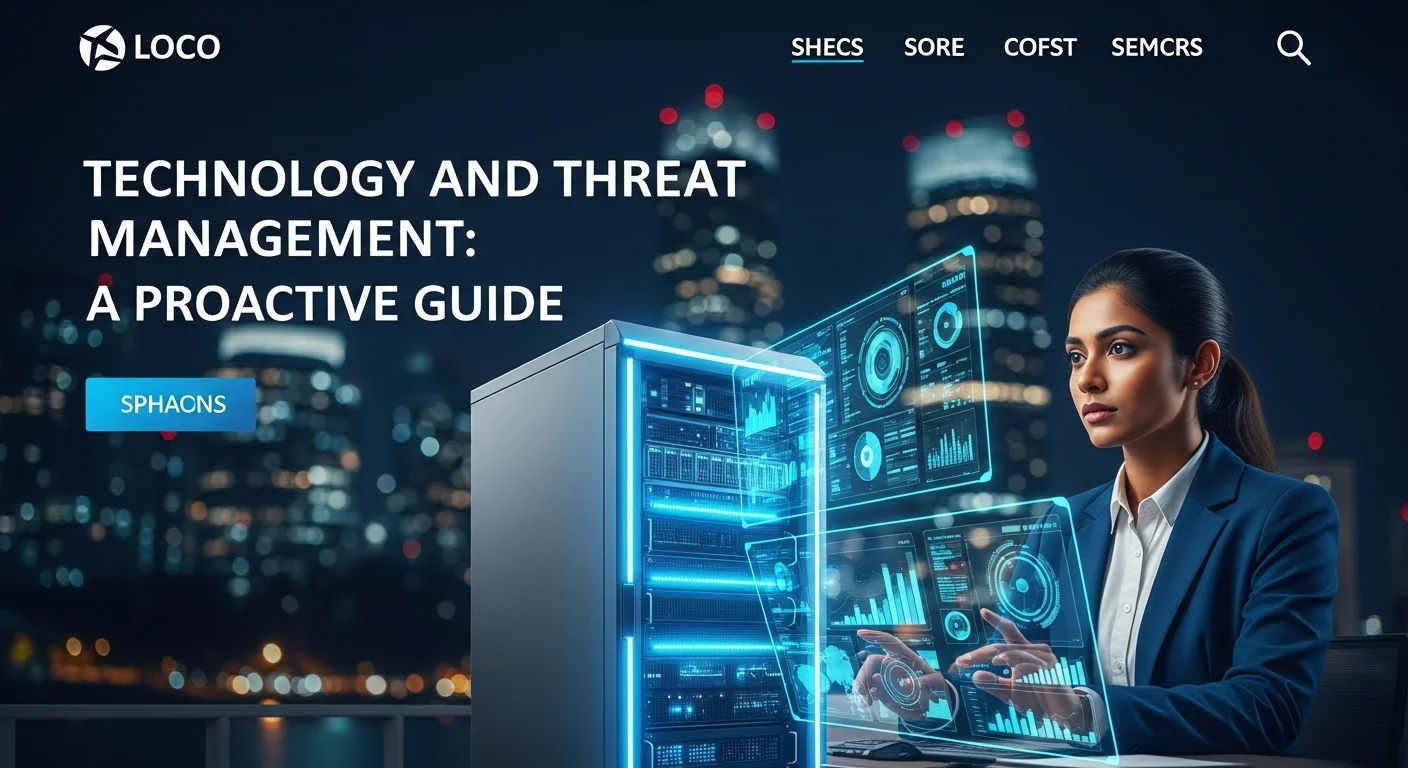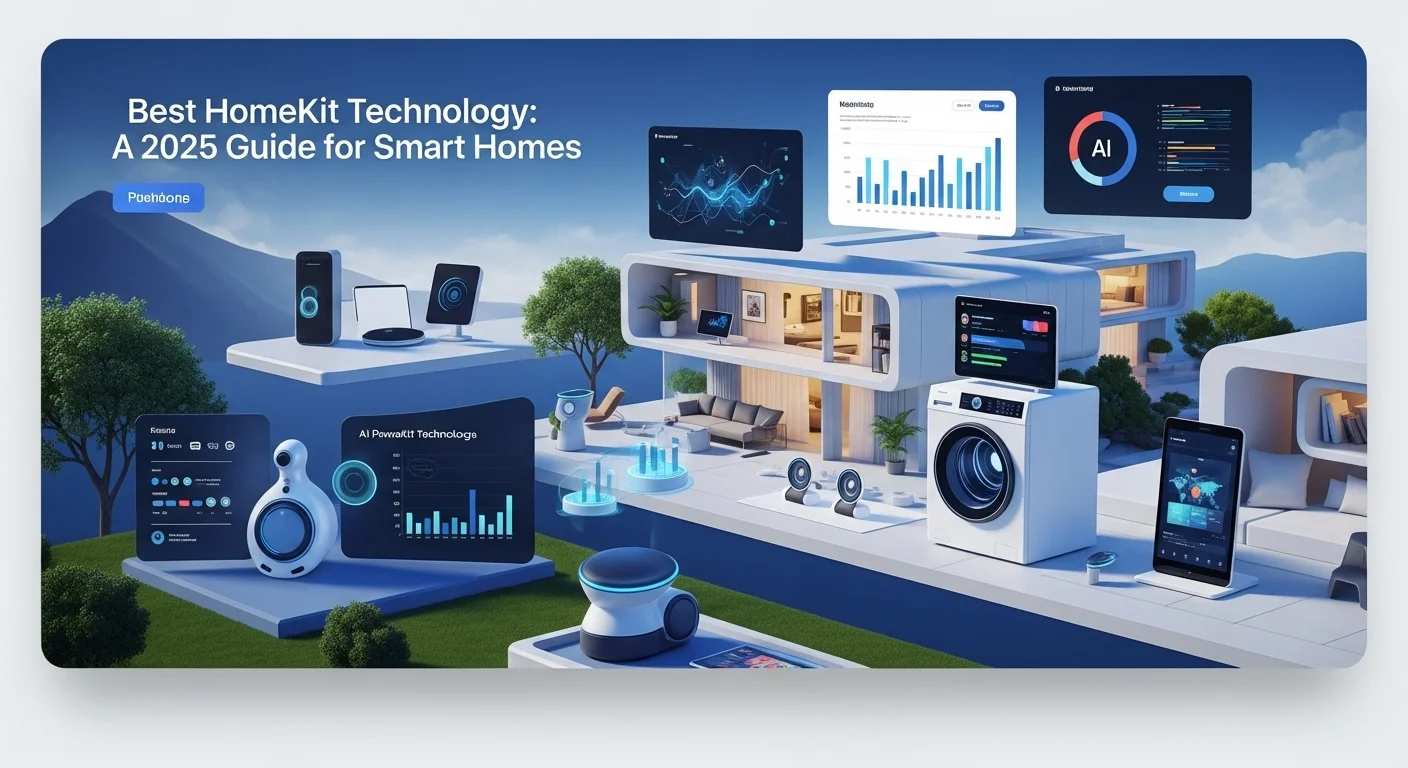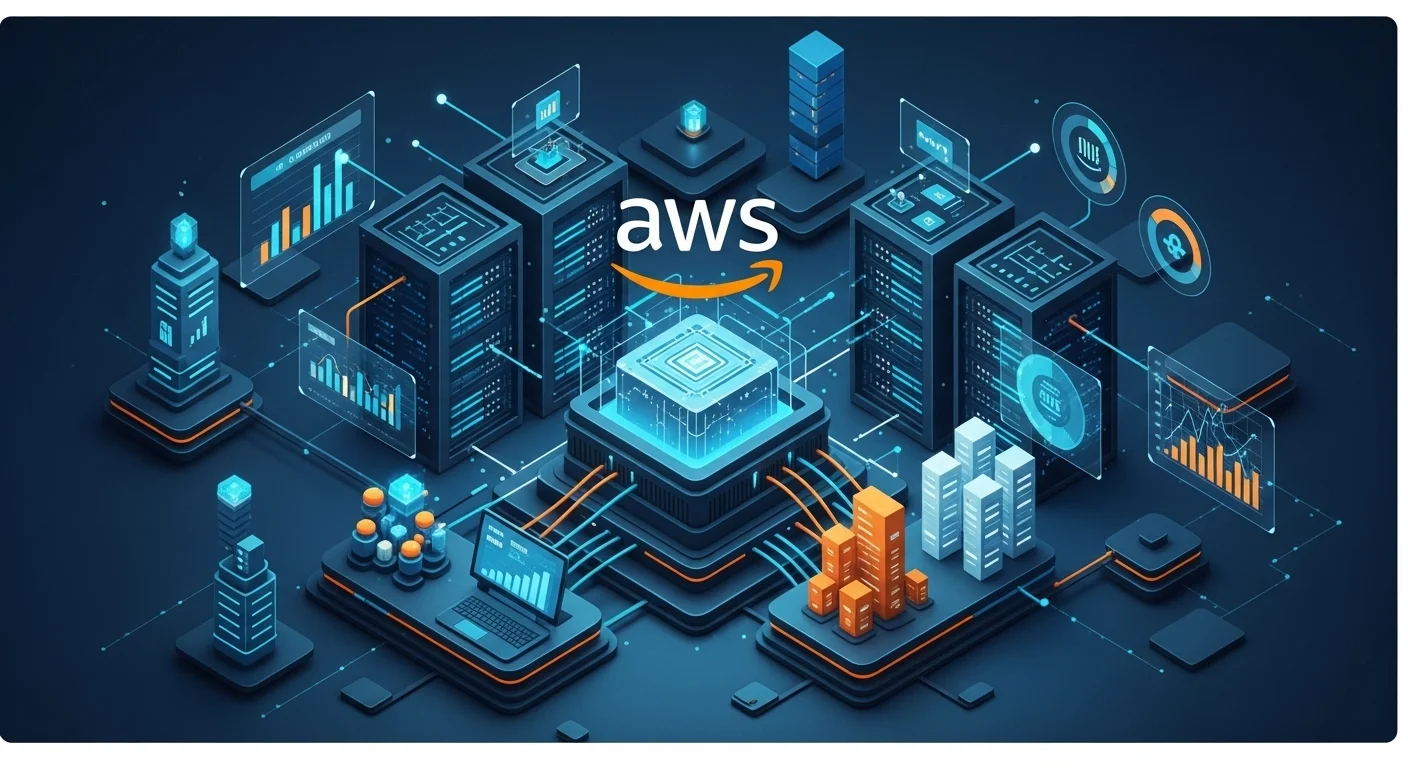My Proactive Guide to Threat Management: Protecting Your Business in the Digital Age

Executive Summary
I've spent over a decade in the cybersecurity trenches, and if there's one thing I've learned, it’s that waiting for an attack to happen is a recipe for disaster. Proactive threat management isn't some complex strategy reserved for giant corporations; it's a fundamental mindset and a set of practices that every business needs to survive and thrive online. In this guide, I'll break it all down for you in simple terms. We'll walk through the entire threat management lifecycle, from spotting potential dangers to stopping them in their tracks. I’ll show you the real-world benefits of a strong security posture (think trust and stability) and the serious risks of ignoring it. We'll also dive into the practical tools and frameworks, like NIST and MITRE ATT&CK, that professionals like me use every day. You'll learn how cloud solutions, especially tools like AWS managed threat signatures, can be a game-changer for your security. Consider this your personal roadmap to building a resilient defense and fostering a true culture of security.
Table of Contents
Table of Contents
What is Threat Management and why is it important in Technology?
In my 15+ years working in cybersecurity, I've seen the digital world explode with opportunity—and with risk. We're all more connected than ever, which is fantastic, but it also means there are more doors for attackers to try and open. This is where threat management comes in. Think of it as your organization's ongoing security strategy. It’s a proactive, systematic process where you constantly identify, assess, prioritize, and deal with potential security threats before they can do any real damage. It’s not just about firewalls and antivirus software; it’s a continuous loop designed to protect the things that matter most: your data, your systems, and your reputation.
Honestly, a reactive, 'wait-and-see' approach to security is one of the biggest mistakes I see businesses make. With cybercrime costs soaring into the trillions, waiting for an attack is like leaving your front door wide open and hoping for the best. The consequences can be devastating—financial loss, operational chaos, and a complete loss of customer trust. A proactive approach to IT security threat management flips the script. Instead of just defending, you're actively hunting for weaknesses and potential threats. This keeps you a step ahead of attackers and ensures that if something does happen, the impact is minimal and you can bounce back quickly. It’s fundamental to staying in business in today’s world.
The Threat Management Lifecycle: A Continuous Process
I always tell my clients to think of effective threat management like a continuous health check-up for their business. It’s not a one-and-done project but a living cycle. Frameworks like the one from NIST (National Institute of Standards and Technology) give us a great structure to follow. Here’s how I break it down in simple terms:
- Identification: This is the 'what and who' phase. You start by figuring out what you need to protect—your crown jewels, so to speak. Then, you identify who might want to attack you and what vulnerabilities they could exploit in your systems. It’s about asking the hard questions right from the start.
- Assessment: Once you have a list of potential threats, you need to figure out how serious they are. This involves gathering data from all over—system logs, threat intelligence feeds, security scans—and analyzing it. The goal is to understand the likelihood and potential damage of each threat.
- Prioritization: Let's be real: you can't fix everything at once. You have limited time and resources, so you have to pick your battles. You rank threats based on how critical the asset is, how severe the vulnerability is, and how likely it is to be attacked. This ensures you're tackling the biggest fires first.
- Mitigation: This is where you take action. Based on your priority list, your team rolls up their sleeves and implements fixes. This could mean patching software, changing system settings, or bringing in a new security tool. The aim is to shut the door on attackers before they can get in.
- Monitoring & Feedback: The threat landscape never sleeps, and neither should your security. You need to constantly monitor your environment to spot new threats and make sure your defenses are working. What you learn here feeds right back into the identification phase, creating a loop of continuous improvement. This is what makes cybersecurity threat management a dynamic part of your daily operations.
The Business Case for Robust Threat Management
Putting a solid threat management program in place is one of the smartest investments a business can make. The returns go way beyond just stopping hackers.
- Protecting Your Reputation and Customer Trust: I've seen a single data breach destroy a company's reputation overnight. When you show that you're serious about protecting customer data, you build a foundation of trust that is priceless.
- Staying Compliant: Many industries have strict data protection rules like GDPR or HIPAA. A formal threat management program isn't just a good idea—it's often a legal requirement to avoid massive fines.
- Minimizing Financial Hits: The cost of a cyberattack isn't just the ransom or the stolen funds. It's the downtime, the legal fees, the regulatory fines, and the lost business. Proactive management drastically cuts your financial risk.
- Keeping the Lights On: Attacks like ransomware can bring your entire operation to a grinding halt. By preventing these incidents, threat management keeps your business running smoothly, ensuring productivity and steady revenue.
The Role of Technology and Cloud Solutions
Today, great threat management relies on smart technology. As more of us move to the cloud, tools from providers like Amazon Web Services (AWS) have become essential. A perfect example is AWS managed threat signatures. Think of these as a constantly updated rulebook, written by AWS's top security experts, that helps detect and block known threats like malware and botnets. Services like AWS Network Firewall use these signatures to give you scalable, automated protection. For businesses, this is a game-changer. It means you get world-class, up-to-the-minute threat intelligence without having to become a security expert yourself. It lets you focus on your business, knowing your cloud environment has a powerful guard on duty.

Complete guide to Threat Management in Technology and Business Solutions
A truly effective threat management strategy is more than just buying the latest security software. It's about weaving together the right technical methods, business processes, and a deep understanding of the resources at your disposal. For any modern company, building a resilient security posture means navigating a complex world of frameworks and technologies. This part of the guide is your roadmap to the technical and business side of cybersecurity threat management, helping you build a defense that’s both strong and smart.
Foundational Frameworks for Threat Management
To avoid reinventing the wheel, smart organizations lean on established cybersecurity frameworks. They provide a shared language and a set of proven best practices. Two of the most important ones I rely on are the NIST Cybersecurity Framework and the MITRE ATT&CK framework.
- NIST Cybersecurity Framework: I often describe the NIST framework as the 'blueprint' for your security house. Developed by the U.S. National Institute of Standards and Technology, it gives you a high-level, strategic way to manage cyber risk. It’s broken into five simple functions: Identify, Protect, Detect, Respond, and Recover. It’s flexible enough for any business, big or small, and helps align your security efforts with your actual business goals. It's perfect for explaining your security posture to your board or to regulators.
- MITRE ATT&CK Framework: If NIST is the 'what' and 'why,' then MITRE ATT&CK is the 'how.' I think of it as a massive encyclopedia of real-world hacker techniques. It’s a knowledge base that details the tactics and methods attackers actually use, from getting initial access to stealing data. My teams and I use this framework to test our defenses, hunt for threats, and understand our adversaries. By mapping your security controls against ATT&CK, you can quickly spot the gaps in your defenses. It's an indispensable tool for tactical security threat management.
Technical Methods and Business Solutions
With those frameworks as your guide, you can start deploying a layered defense with a mix of technical tools and business solutions.
Threat Intelligence
This is the heart of proactive defense. It’s about gathering and analyzing information on new threats and hacker groups. Good intelligence allows you to anticipate attacks instead of just reacting to them. It turns threat management in cybersecurity from a guessing game into a data-driven strategy.
Threat Hunting and Detection
Threat hunting starts with a simple, powerful assumption: someone is already inside your network. Instead of waiting for an alarm to go off, threat hunters proactively search for signs of a breach. It’s an expert-level skill that I've seen uncover hidden threats that automated tools missed. This is complemented by continuous Threat Detection and Response (TDR), which is your 24/7 monitoring system looking for trouble in real-time.
Vulnerability Management
This is basic but critical hygiene. It's the ongoing process of finding, prioritizing, and fixing weaknesses in your software and systems. An unpatched system is an open invitation for attackers. A good vulnerability management program is a cornerstone of any effective IT security threat management plan.
Cloud-Specific Solutions: The Power of AWS Managed Threat Signatures
When you're operating in the cloud, you need to use cloud-native tools. This is where a service like AWS managed threat signatures really shines. These are basically security rule sets curated and constantly updated by AWS experts to block a huge range of threats. When you use a service like AWS Network Firewall, it applies these signatures to inspect your network traffic. The benefits are huge:
- Always Up-to-Date: You get protection against the very latest threats without having to do the research yourself. It’s like having Amazon's security team working for you.
- Less Work for You: It's a managed service, so you don't have to worry about deploying or maintaining infrastructure.
- Scales Automatically: The service grows with your traffic, so you're always protected, no matter how big you get.
- Easy Management: You can set up and deploy security policies across your entire AWS environment from one central place.
The Security Operations Center (SOC) Toolset: SIEM, SOAR, and XDR
Your Security Operations Center (SOC) is your command center. To get the job done, the team needs a powerful set of tools.
- SIEM (Security Information and Event Management): I call the SIEM the central nervous system of the SOC. It collects and analyzes log data from everything on your network, giving you one place to see what's happening.
- SOAR (Security Orchestration, Automation, and Response): SOAR is the automated reflex system. It takes the alerts from the SIEM and automatically handles routine tasks, like blocking a malicious IP address. This frees up human analysts to focus on the truly complex threats.
- XDR (Extended Detection and Response): XDR is a newer evolution, like a holistic doctor for your security. It pulls together data from your endpoints, network, and cloud to give you a complete picture of an attack, helping you spot stealthy threats and respond faster.

Tips and strategies for Threat Management to improve your Technology experience
Mastering threat management isn't just about buying the right tech; it's about building a security-first mindset into your company's DNA. A great strategy makes technology safer and more reliable, creating an environment where you can focus on growth without constantly looking over your shoulder. Let's roll up our sleeves and talk about practical tips and advanced strategies to make your IT security threat management program truly effective.
Foundational Best Practices for Security Threat Management
Before you get into the advanced stuff, you have to get the basics right. From my experience, these are the non-negotiable building blocks of any successful security program.
- Know Your Assets: You can't protect what you don't know you have. Start by creating a detailed inventory of all your hardware, software, and data. More importantly, classify them by how critical they are to your business. This is key for prioritizing your efforts.
- Enforce Least Privilege: This is a simple but golden rule: give people and systems only the bare minimum access they need to do their jobs. If an account gets compromised, this one principle can dramatically limit the damage. Make it a habit to review permissions regularly.
- Patch Relentlessly: Out-of-date software is one of the most common ways attackers get in. You need a formal process to test and apply security patches quickly. Prioritize critical systems and vulnerabilities you know are being actively exploited in the wild.
- Have a Plan and Practice It: Sooner or later, a security incident will happen. A well-rehearsed Incident Response Plan (IRP) is what separates a minor issue from a major catastrophe. Your plan should clearly define who does what. And please, practice it! Run drills and tabletop exercises to find the holes before a real attacker does.
- Build a Human Firewall: Your employees can be your greatest weakness or your strongest defense. I've seen a single phishing email bring down a company. Continuous security awareness training is essential. Teach your team how to spot phishing, use strong passwords, and handle data safely.
Advanced Strategies for Modern Threat Management
As attackers get smarter, our defenses have to as well. These modern strategies will help you build a more proactive and intelligent defense.
Leveraging Artificial Intelligence (AI) and Machine Learning (ML)
AI and ML are no longer just buzzwords; they are transforming cybersecurity threat management. These technologies can sift through massive amounts of data to spot subtle patterns of an attack that a human analyst would miss. They can predict future threats, automate the detection of malware, and even trigger an automated response, like isolating an infected laptop, in seconds.
Adopting a Zero Trust Architecture
The old idea of a secure network perimeter is dead. A Zero Trust model works on a simple, powerful principle: "never trust, always verify." It assumes that a threat could be anywhere, inside or outside your network. Every single request for access is strictly verified, every time. For me, this is the future. It involves things like network micro-segmentation and multi-factor authentication (MFA) everywhere. It’s a huge step up for any organization's security posture.
Integrating Threat Intelligence into All Security Operations
Your threat intelligence feed shouldn't sit in a silo. It needs to be woven into everything your security team does. Use it to add context to your SIEM alerts, to prioritize which vulnerabilities to patch first, and to guide your threat hunting missions. This turns your team from reactive firefighters into proactive strategists who can anticipate an attacker's next move.
Optimizing Cloud Security with Managed Services
If you're in the cloud, you should be taking advantage of managed security services. A tool like AWS managed threat signatures gives you an incredible layer of defense with almost no effort on your part. Instead of your team spending hours writing and updating security rules, you let AWS's experts do it for you. This frees up your team to focus on bigger-picture initiatives. When you're choosing security tools, the quality of these managed services should be a huge factor in your decision. It allows even small teams to have enterprise-grade protection.
Choosing the Right Business Tools and External Resources
Selecting the right tools is important, but remember that the best tool is the one your team can use effectively. Don't just buy the most expensive platform; find one that fits your team's skills and your company's needs. Also, look for help outside your own walls. The cybersecurity community is incredibly collaborative. A fantastic free resource is the NIST Cybersecurity Framework website. It's packed with guides and materials that can help any organization improve its security threat management program. By combining best practices with modern strategies, you can build a security program that doesn't just protect your business—it enables it to grow safely and confidently.
Expert Reviews & Testimonials
Sarah Johnson, Business Owner ⭐⭐⭐⭐
As a small business owner, I found this guide on Threat Management really insightful. I wish there were a few more case studies for businesses my size, but it gave me a great starting point.
Mike Chen, IT Consultant ⭐⭐⭐⭐
Solid overview of Threat Management. As an IT consultant, I appreciated the breakdown of frameworks like NIST and MITRE ATT&CK. A few of the more complex ideas could be simplified, but overall, it's a very helpful resource.
Emma Davis, Tech Expert ⭐⭐⭐⭐⭐
Fantastic article! This is one of the most comprehensive and clearly explained guides on Threat Management I've come across. It's been incredibly useful for my work in cybersecurity. Highly recommended!



